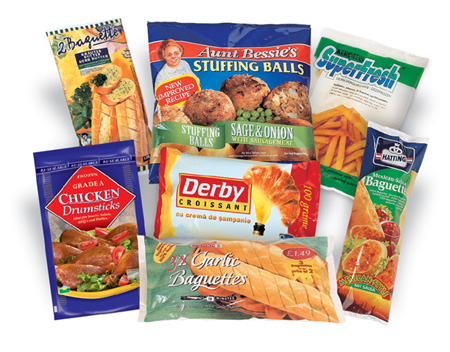
Recycling sounds, in action, to be as clear as the label on a backyard bin. But, knowing what to put in there can be as mysterious as trying to guess exactly what was in the back of the freezer. When it comes to frozen containers and recycling, the relationship is a bit cold — most grocery store containers just aren’t recyclable. Luckily, there are some straightforward guidelines that outline what makes freezer containers unrecyclable, give some sound alternatives to the recycling bin, and provide insight into the future of recycling freezer containers.
But first, the curve ball: If a plastic container is imprinted with three arrows on the box, it is not necessarily recyclable. The disparity between what the consumer thinks the label means and the plastic companies know it means is extremely different, but very obvious.
What the consumer thinks three arrows imprinted on a box means: “I can recycle this.” What the plastics industry knows: “It’s an indicator of the type of plastic used, and consumers should know that.”
Once consumers get past assumption and into the facts concerning freezer containers, there is one main reason that most containers can’t be used: They are heavily laced with chemicals to preserve food. Drinks, such as that six-pack sitting in the back of the fridge, are guilty of contamination as well; the cans are loaded with anti-dampening chemicals. But, the biggest contaminate culprit? Laced plastic, which is the most common, used for everything from frozen meat, poultry, fish, fruits and vegetables to desserts such as ice cream, according to the Handbook of Frozen Food Processing and Packaging, by Da-Wen Sun. The book goes so far as to assert that someday the packaging will be sprayed with a chemical that will be recyclable and nontoxic, but does not go into specific detail. Being environmentally friendly isn’t something that can currently been done with your freezer favorites.
The desire to use bags and still be environmentally conscious has given ways to other “recycling” methods. One blogger couldn’t give up her use of them, but shared a way to reuse them.
“There are times when nothing works better than a plastic freezer bag,” she concedes. “So, how can I use these bags and still not trash the environment?”
Her answer was simple: She reuses them. In the past two years, she has only bought a box of 35 bags. She preserves them by being careful with them and when they are empty, washing them thoroughly, drying them and storing them for the next time. The blog effectively makes the case for simple solutions to a seemingly complex problem.
But, for a long-term, widespread solution that goes beyond the consumer, it would take manufacturers and stores working together. Though logistically not figured out, one teacher decided to have her students imagine the effectiveness of one gigantic grocery store providing help to the environmentally conscious consumer by marketing recyclable items.
As a way to motivate her students, she documented the experiment using her blog. Simply titled, Greening the Grocery Store, Caitlin Garrison writes about the experiences when leading her North Carolina State University College of Design students through a conceptualization of signs, pictures and paint — all leading the consumer to buy the recyclable product over the non-recyclable one. From a friendly reminder to bring our own bag, to codes for paper versus plastic, the design experiment started with the biggest impact: shelves. Their solution? Coded shelves with colorful construction tape. Green/white stripes indicate a fully recyclable product made from recycled content. Red/black stripes indicate a landfill product, and are made from non-recycled sources. Other colors refer to partial recycling.
The point of the rating system was meant to make sure that the consumer “proceeds with caution.” The conclusion of the study was the realization, and the compelling point, that the future of all recyclables, including frozen containers, is the willingness of all parties to produce them. How to inform without infuriating, how to get manufacturers to list what is in the container as well as the food, and how to add “please recycle” messages without adding to the load of shoppers were all a part of the creative process. So, what is the answer to the unrecyclable freezer container problem? Wash out the bag. Save the box. Be creative, because, for now, innovation is key.